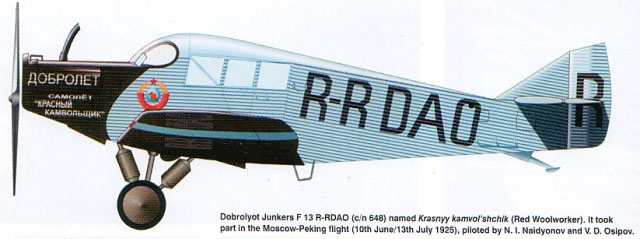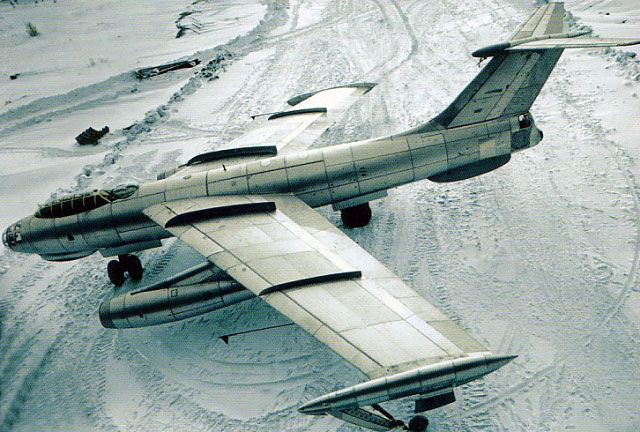S u m m a r y |
| Publisher's details and
Title |
German Aircraft in the Soviet Union and Russia |
| Media: |
Hard Cover; 320 pages |
| Price: |
Available
for GBP£35.00 from Ian Allan |
| Review Type: |
First Read |
| Advantages: |
Well laid out, extensive timeline, easy to read text, varied selection of photographs, superb artwork. |
| Disadvantages: |
|
| Conclusion: |
A comprehensive history of how the growth of aviation in Russia and the Soviet Union has been influenced by the importation and acquisition of German aircraft and their engines. |
Reviewed by
Rob Baumgartner
The development of aviation in Russia and the Soviet Union is inseparably linked to that of other countries.
Germany, along with France and Great Britain have contributed aircraft, engines or both in one way or another to profoundly influence the thinking of the Russian/Soviet aeronautical industry.
Many aircraft found their way to Russia, either as purchased machines or examples captured during conflict, and this book looks at those of German origin. The authors have given themselves quite an undertaking as they have chosen to cover the period 1910 to the present day. Undaunted, they proceed to give the reader a full understanding of the circumstances under which the aircraft were acquired and how they were used by their new owners.

The writers have researched a number of areas to help present this lavish publication. Primary sources include technical descriptions published by the Bureau for New Technology of the Central Aero & Hydrodynamics Institute (TsAGI) and test reports from LII and NII VVS.
These quoted accounts are highly interesting as some of the conclusions reached by the Russians did not necessarily match the airplane’s true worth.
Scores of other important books and periodicals have also been utilized. As a result the aficionado will be familiar with a certain proportion of the presented material and this also applies to the photographic content. An important different here, is that all this diverse information is conveniently brought together within a single volume, and has also been enhanced by the considerable narrative.
Speaking of which, the text is well written and simple to understand. The technical nature of the subject could easily have bogged the reader down but fortunately this hasn’t happened. Where necessary the authors point out any conflicting information and where possible, direct the reader to the origins of the data.
All this is printed on quality stock and covers an impressive 320 pages.
With over 850 photographs, there is plenty of visual appeal. The high number is due to the “thumbnail” approach for some of the images and these usually represent walkaround shots or frames from film sequences.

There are also a number of technical illustrations which, along with the general arrangement drawings, cater for some of the less familiar types. These accommodate both engines as well as aircraft with examples of the latter being the Junkers F 13, J20, J21, W33, W34, JuG-1, K 47, the Polikarpov I-7, and the RB-2 “150” medium bomber.
A work such as this wouldn’t be complete without colour profiles. Fortunately we have plenty with 45 beautifully done aircraft that represent an excellent cross-section of types evaluated. They range from First World War Albatros, LVG, and Halberstadt two-seaters to some lesser illustrated types in the form of the Heinkel HD 55 (KR-1), Junkers J 20, JuG-1, and Polikarpov I-7. Others portray the more traditional aircraft such as the WWII products from Messerschmitt, Focke Wulf and the like.
The chapters are logically arranged in chronological order as follows:
-
“German aircraft in Russia – 1909 to 1917”. Not only does this look at captured aircraft of WWI but also traces the first instances of German aircraft being imported into Russia.
-
“German Aircraft in Soviet Russia and the USSR 1918 – 1936”. This spans from the Bolshevik revolution to the beginning of the Spanish Civil War.
-
“The Spanish Civil War and World War II: German aircraft of 1936 – 1945 in the USSR”. As expected, this section is the largest and consists of 115 pages.
-
“Testing of captured jet aircraft and turbojet engines in the USSR 1945 – 1947”. Germany’s defeat allowed the Soviet Union unfettered access to technology that happened to be in their zone of occupation. Both aircraft and “flying bombs” feature here.
-
“Soviet-controlled German design Bureau (in Eastern Germany and in the USSR 1945-1954)”. This chapter looks at the recruiting of German engineers for the development of the above jet technology for the USSR.
-
“German aircraft in the USSR/Russia after the Mid-1950s”. This period was dominated by the “Cold War” when after 1947 the importation of aviation technology from the West came to a virtual standstill. The emergence of the Russian Federation is not forgotten and the publication finishes with a look at the most recent developments.
This book is not exhaustive in covering all the German aircraft evaluated by Russia and the Soviet Union and nor does it claim to be.
It gathers all the relevant material together from a number of sources and gives the reader as complete a picture as possible regarding the Russian/Soviet utilization of German aircraft, engine and rocket technology over the years.
It is superbly presented with a logical layout and the proliferation of photographs and excellent artwork make this an ideal book to pick up and thumb through when time is limited. Or one can sit down and enjoy a pleasant reading from any selected chapter as each section can be read in isolation.
Overall it’s an absorbing publication that gives the enthusiast an excellent understanding of this fascinating subject.
Thanks to DLS Publishing for the review sample
Review Copyright © 2008 by Rob Baumgartner
This Page Created on 15 October, 2008
Last updated 15 October, 2008
Back to HyperScale Main Page
Back to Reviews Page
|
Home
| What's New | Features | Gallery | Reviews | Reference | Forum | Search